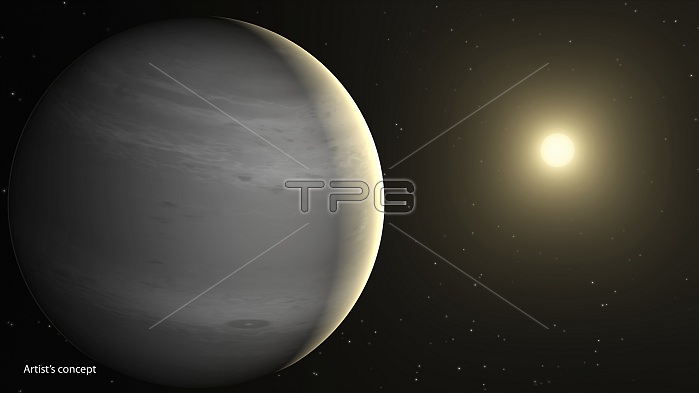
Illustration of a proposed helium-atmosphere planet, GJ 436b, found by the Spitzer Space Telescope. The planet orbits every 2.6 days around its star, which is cooler than our sun and thus appears more yellow-orange in colour. Planets having atmospheres rich in helium may be common in the Milky Way galaxy. These planets would be around the mass of Neptune, or lighter, and would orbit close to their stars. It is thought that radiation from the stars would boil off hydrogen in the planets' atmospheres. Both hydrogen and helium are common ingredients of gas planets like these. Hydrogen is lighter than helium and thus more likely to escape. After billions of years of losing hydrogen, the planet's atmosphere would become enriched with helium and would appear covered in white or grey clouds, in contrast to Neptune, which is blue due to the presence of methane.
| px | px | dpi | = | cm | x | cm | = | MB |
Details
Creative#:
TOP24880306
Source:
達志影像
Authorization Type:
RM
Release Information:
須由TPG 完整授權
Model Release:
N/A
Property Release:
N/A
Right to Privacy:
No
Same folder images:

 Loading
Loading